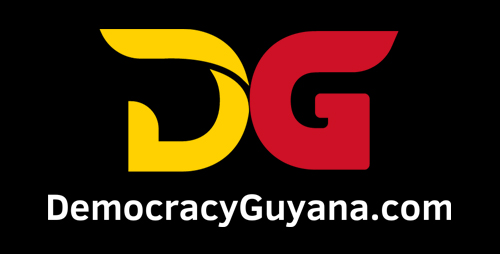Most Guyanese on May 26, 1966 mostly grew up on mud dams, in homes occupied by multiple families, often with great grandparents and great grandchildren all living in the same home, often sleeping on floors. In some areas, people were still living in logies. Only about 30% of Guyanese children were able to attend secondary school.
The first university in our country, derisively referred to as “Jagan Night School”, had just started. Outside of a small public service, sugar and bauxite were the only large-scale employment. Most others made a living through fishing and farming. We have come a long way since May 1966.
While most people by 1990 had begun to question whether Independence was a good thing, with high hopes mostly dashed because the first two-and-a-half decades after independence found Guyana mired in poverty and hopelessness through a brutal dictatorship, today we have every reason to celebrate our independence. It is ironic that those who dashed the hopes and aspirations that were high on May 26, 1966 were the very ones who also removed May 26 as a holiday in our country. We became the only country in the world that did not celebrate our independence as a holiday.
Cheddi Jagan and the PPP returned May 26 as a holiday, and also revived the hopes and aspirations that followed the first flag-raising ceremony in Guyana.
Guyana has every reason to celebrate our independence. Since May 26, 1966, Guyana has moved from being a poor colonial country to becoming a highly-indebted poor country(HIPC), to a middle-income country, to a high-income country. While we have had periods of tension, while ethnic and racial tensions continue to be a challenge, we have never experienced sustained mass conflict. We have gone from where the vast majority of Guyanese families lived in almost extreme poverty to where less than 20% live in poverty. We have more than tripled the number of family-owned homes, where most Guyanese families now own a vehicle, where a significant number of people are college-educated, where life expectancy has surpassed 70, where we have universal access to primary and secondary schools across our country, and university education has reached into poor families in every region of our country.
Just consider that, in 2023, more than 44,000 vehicles were imported into Guyana. This means that in a single year now, we are bringing in significantly more vehicles than the total number of vehicles that existed in our country at independence.
Guyana is in the process of removing any mud dams in our communities, most recreation grounds now have some form of flood-lights, electricity has reached most communities, potable water is accessible by more than 95% of our people, health care is universal. Every Guyanese family can now realistically hope to live in their own home. Our doctors, lawyers and engineers are children from every region. Guyana now beckons as the Caribbean’s bread-basket, finally. And Guyana is pivotal to the global aspirations of food security, energy security, and climate security.
This year, we celebrated the traditional flag-raising in Linden, Region 10. From reports coming out of Linden, the 2024 flag-raising ceremony was one of the most impressive of all the 58 flag-raising ceremonies so far. In spite of the hard work of the Opposition to have the event boycotted, the people of Linden and Region 10 ignored the demand from the Opposition and participated fully.
Aubrey Norton, the Leader of the Opposition, is no Cheddi Jagan. But he would have benefitted had he learnt a lesson from the great Cheddi; he could have attended the event and showed that, when it comes to Guyana, petty politics will not daunt him from standing with Guyanese in a show of unity. Cheddi stood by Forbes Burnham’s side as Forbes Burnham hoisted the Golden Arrowhead for the first time. The hoisting of the flag should never be an event that divides a nation. Like securing our borders, celebrating our independence must be an occasion to unite, rather than to divide. When it comes to our independence, the people took a stance – they will never boycott our nation.
The son of the great American Civil Rights Leader Jessie Jackson, now a US Congressman, attended the event. He saw firsthand that the story being spread by the PNC and their henchmen in Brooklyn — of massive discrimination against Afro-Guyanese — is bogus. In his visit to Guyana, he saw for himself the robustness of development taking place, and that citizens across Guyana are benefitting. He saw that President Irfaan Ali and his government were welcomed and embraced in a town that has remained one of the fortresses of the PNC.
The truth is that the solidarity and unity of Cheddi Jagan’s 1953 movement, which eluded Guyana for all the years of our independence, is poised to return. I am one of the optimistic Guyanese that never gave up on Jagan’s eternal fight to unite our country. In spite of the conviction that many still harbour, that racial and ethnic unity is an impossible dream, I believe that our country can demonstrate in real terms that ethnic and racial diversity is an asset.
President Irfaan Ali and the PPP are poised to shatter forever the barriers that have kept our people divided. LGE 2023 has already shown that the iron grip of racial voting has begun to crumble. Elections 2025 will dismantle the myth that voting in Guyana would always be race-based.
President Irfaan Ali and the PPP Government have utilized a ONE GUYANA policy perspective to drive this unity. The fissures that have begun to become visible in the iron clutch of racism in our country are not coincidental, or happening by accident. The 1968 slogan of feeding, clothing and housing the nation, which followed independence, is really happening in Guyana, finally. It took a while, but the hopes and aspirations that prevailed in 1966 were not in futility.





